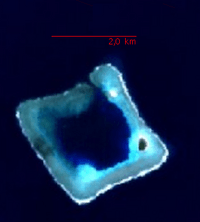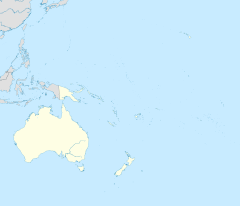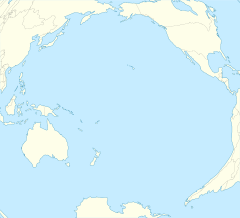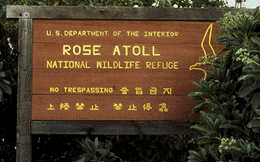Rose Atoll facts for kids
Quick facts for kids
Rose Atoll
|
|
|---|---|
|
Atoll
|
|

Rose Atoll
|
|

NASA satellite imagery
|
|
| Territory | American Samoa |
| Area | |
| • Land | 0.083 sq mi (0.214 km2) |
| Population | |
| • Total | 0 |
| • Density | 0-880/sq mi (0-1,000/km2) |
Rose Atoll is a small island in the Pacific Ocean. It's part of American Samoa, a territory of the United States. People from nearby islands sometimes call it Rose Island or Motu O Manu.
No one lives on Rose Atoll. It's a special place for wildlife. It's also the southernmost point of the United States. The land part is tiny, about 0.214 square kilometers. But the whole atoll, including its water areas, is about 5 square kilometers. There's a small opening, about 40 meters wide, that lets boats into the calm water inside. The atoll has two small islands. The larger one is Rose Island (3.5 meters high). The other is Sand Island (1.5 meters high), which has no plants. Rose Atoll is a Marine National Monument. It is looked after by the U.S. Fish and Wildlife Service and the government of American Samoa.
Contents
History of Rose Atoll
Early Discoveries and Naming
The first time Western explorers saw Rose Atoll was on June 13, 1722. This happened during a trip by Jacob Roggeveen. He called it Vuil Eiland, which means "useless island."
The name Rose Island came from Louis de Freycinet in 1819. He named it after his wife, Rose de Freycinet. She was the second woman to travel around the world. Rose de Freycinet was also the first to write about her journey. Louis de Freycinet wrote that he named the island after "someone who is extremely dear to me."
A few years later, in 1824, another group saw the island. This was an expedition led by Otto von Kotzebue. He named it Kordinkov after his First Lieutenant.
Amazing Animals of Rose Atoll
Rose Atoll is home to many amazing sea creatures. It has the largest groups of giant clams in American Samoa. It also has many nesting seabirds and rare reef fish.
Fish and Ocean Life
The fish here are different from other places nearby. There are many fish that eat other animals, called carnivores. There are fewer fish that eat plants, called herbivores. Scientists have found almost 270 different kinds of fish here. Outside the calm lagoon, you can find tuna, mahi-mahi, billfish, barracuda, and sharks. In deeper waters, divers have seen tunicates and stalked crinoids. Large sea animals like the endangered humpback whale and dolphins also swim in these waters.
Sea Turtles and Their Reproduction
Rose Atoll is a very important place for sea turtles. It is a critical nesting spot for the threatened green turtle. It is also important for the endangered hawksbill turtle. These turtles travel between American Samoa and other Pacific islands. They lay their eggs on Rose Atoll between August and February.
Birds and Their Life Cycle
About 97% of all seabirds in American Samoa live on Rose Atoll. All 12 types of birds found here are protected by law. Red-footed boobies and large frigate birds build their nests in the buka trees. Black noddies and white terns nest in the middle and lower branches. The roots of the trees are used by reef herons and red-tailed tropic birds. Other birds live in the Pisonia forest. This is the only Pisonia forest left in Samoa.
Rose Atoll is known as an Important Bird Area (IBA). This is because it has a huge group of sooty terns that nest there. In 1974, about 400,000 sooty terns were counted.
Images for kids






